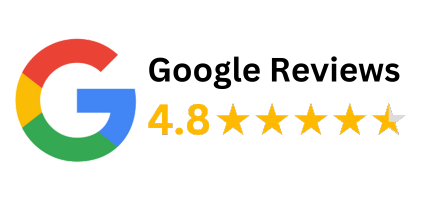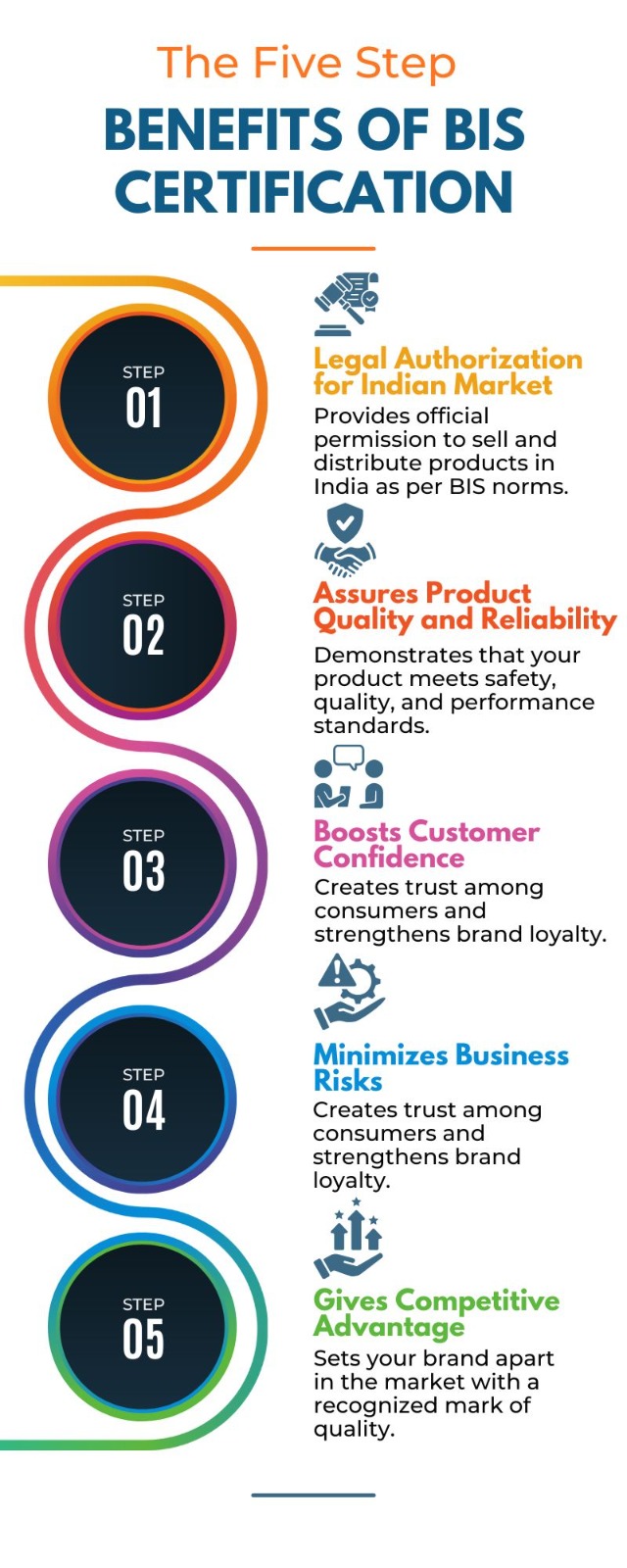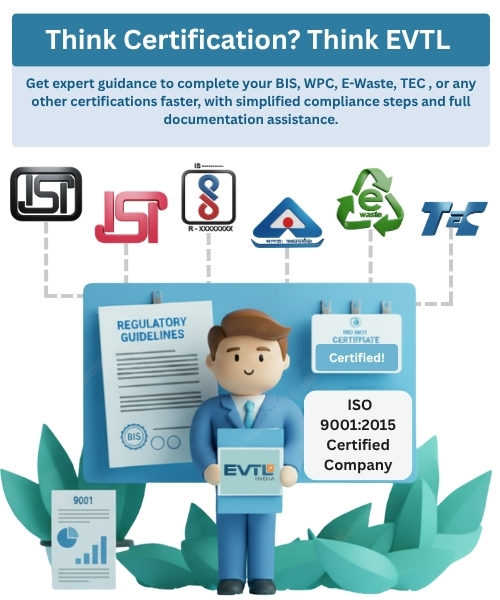Get A Quote
LM-79 and LM-80: LED Testing Standards
As a leader in regulatory compliance sector, EVTL India offers expert services for obtaining LM-79 and LM-80 certifications (LED Testing Standards), ensuring products meet rigorous industry standards. Our streamlined approach simplifies the testing process, helping manufacturers swiftly bring reliable, high-quality LED products to market with confidence in their performance and compliance.

- Overview
- Why Do LED Testing Standards Matter?
- What is LM-79?
- Key Aspects of LM-79 Testing
- Importance of LM-79 in the Industry
- What is LM-80?
- Key Aspects of LM-80 Testing
- Importance of LM-80 in LED Product Development
- The Role of LM-79 and LM-80 in LED Quality
- Conclusion
- Frequently Asked Question (FAQ)
LM-79 and LM-80: LED Testing Standards - Overview
As LED lighting becomes increasingly popular for its energy efficiency, longevity, and environmental benefits, it’s essential to ensure that LED products meet rigorous quality and performance standards. The LED market is growing rapidly, and as consumers, designers, and regulators rely on LED technology for everything from residential to commercial lighting, there’s a need for reliable, standardized testing benchmarks that provide transparency and consistency in performance metrics.

Two key standards—LM-79 and LM-80, established by the Illuminating Engineering Society (IES)—serve as industry benchmarks to evaluate LED lighting quality. These standards cover critical aspects like light output, color consistency, and long-term durability, ensuring that manufacturers, designers, and consumers can make informed decisions based on credible data.
This article will provide a comprehensive overview of the LM-79 and LM-80 standards, why they matter in the industry, the specific parameters they assess, and the crucial role they play in guaranteeing LED lighting quality and reliability.
- Short-range devices (30 kHz – 866 MHz)
- Near Field Communication (NFC) and RFID
- Digital Enhanced Cordless Telecommunications (DECT) and Ultra Low Energy (ULE) at 1.9 GHz
- blacktooth (versions 2.0 to 5.2)
Devices that emit RF energy need testing and certifications like the FCC’s before they can be sold. Without proper testing, companies can face fines, have their products seized, or lose profits.
This article explores what RF testing is, why it’s important, the various types of tests involved, and the tools and techniques that make RF testing effective in today’s highly connected world.
What is RF Testing?
RF testing is a process that checks the radio frequencies and performance of wireless devices to ensure they’re using their space on the frequency spectrum efficiently and without causing interference. The "radio frequency" in RF refers to the oscillation rate of radio waves—essentially, it’s the "tuning" that enables devices to communicate on a specific frequency. Every time you tune in to a specific radio station, for example, you’re telling your radio to listen to that specific frequency, filtering out others.
RF testing is essential because it ensures that these radio waves are not interfering with each other in the airspace, allowing devices to operate harmoniously in close proximity. Proper RF testing is mandated by law in most markets, requiring wireless devices to meet specific frequency standards. Compliance with these standards is critical for manufacturers and service providers alike, as it ensures that devices can operate within legal and safety parameters, preventing issues like signal overlap and interference. Non-compliance can lead to penalties, market restrictions, and operational problems.
Types of RF Tests
RF testing involves a range of tests tailored to examine specific aspects of a device's performance, including its ability to send and receive signals clearly, manage interference, and operate at a legally compliant power level. Here’s an overview of some key types of RF tests:
- Spectrum Analysis: Spectrum analysis examines the frequency range of a device’s transmissions. It’s essential for identifying any unwanted emissions that could interfere with other devices or violate regulatory standards.
- Power Measurement: Power measurement tests confirm that a device’s power output is within required limits, preventing excessive signal bleed that can interfere with nearby devices.
- Network Analysis: Network analysis looks at the pathways of RF signals through circuits and components, identifying any losses or reflections that could degrade signal quality. Parameters such as return loss, insertion loss, and impedance matching are critical to analyze here.
- Modulation Testing: Modulation testing checks that a device is encoding data correctly onto RF signals. Accurate modulation is essential for complex data transmissions, like those in cellular and Wi-Fi networks, where errors can lead to lost or distorted data.
- Interference and Noise Testing: This type of testing detects any RF interference from other devices or background noise, ensuring the device can maintain clear, reliable signals without disruption.
- Receiver Sensitivity Testing: Receiver sensitivity testing evaluates how well a device can pick up weak signals, which is crucial for performance in low-signal environments.
- Environmental Stress Testing: Environmental stress testing assesses how well RF devices perform under different environmental conditions, such as extreme temperatures and humidity. This testing ensures that devices can withstand real-world operating conditions.
Why Do LED Testing Standards Matter?
As LED technology continues to advance, standardized testing methods like LM-79 and LM-80 have become indispensable in the lighting industry. These standards offer consistent guidelines for evaluating the performance, efficiency, and durability of LED lighting products, and they play an essential role in meeting regulatory requirements and industry expectations. Testing standards help manufacturers benchmark their products against market expectations, and for consumers, they instill confidence that the LED lighting products they purchase will meet performance claims and energy efficiency goals.
Moreover, these standards serve a dual purpose by supporting both regulatory compliance and industry quality control. Government and regulatory agencies often base energy-efficiency certifications, such as Energy Star, on compliance with LM-79 and LM-80, making these standards a gateway to certification and qualification for rebates and incentives. These testing methods are also vital for designers and specifiers who select LED products for projects with specific performance criteria, as the data from LM-79 and LM-80 enables reliable comparisons and helps them select products that meet exacting requirements.
Without such standards, it would be difficult for consumers and professionals alike to distinguish between high-quality and low-quality products in the market. The importance of standardized testing is even more pronounced given the rapid evolution of LED technology, which requires updated testing methodologies that can keep up with new performance benchmarks.
What is LM-79?
The LM-79 standard, formally titled "Electrical and Photometric Measurements of Solid-State Lighting Products," was developed by the Illuminating Engineering Society (IES) to establish procedures for evaluating the performance of LED luminaires and lamps. It provides a standardized approach to measure LEDs’ electrical and photometric properties, enabling reliable comparisons of performance metrics across different products and manufacturers. This standard is particularly critical because LED products are more complex than traditional lighting, requiring unique methods to accurately assess aspects such as color consistency, brightness, and overall efficiency.
LM-79 testing involves a controlled lab environment with specific parameters for evaluating light output, luminous efficacy (lumens per watt), power consumption, chromaticity, and correlated color temperature (CCT). The standard also addresses the need to assess color rendering index (CRI), which measures a light source's ability to accurately reveal the colors of objects. These measurements are performed using specialized equipment such as integrating spheres and goniophotometers, which help determine the total luminous flux and light distribution patterns.
Key Aspects of LM-79 Testing
LM-79 includes specific metrics to determine how well an LED product performs in controlled conditions.
- Luminous Flux (Light Output): LM-79 specifies methods to measure the total light output, or luminous flux, of an LED product, typically measured in lumens. Accurate luminous flux measurements are vital for comparing LEDs' brightness and determining if they meet brightness requirements for specific applications.
- Luminous Efficacy: Luminous efficacy measures the efficiency of an LED by calculating the ratio of light output to power consumption, expressed in lumens per watt (lm/W). High luminous efficacy indicates that an LED produces more light with less energy, which is essential for energy-efficient designs.
- Chromaticity (Color Quality): Chromaticity testing evaluates the color output of LED lights, including correlated color temperature (CCT) and color rendering index (CRI). Consistent chromaticity is critical in environments where color accuracy matters, such as retail spaces or art galleries.
- Electrical Measurements: LM-79 includes protocols for measuring power consumption, power factor, and input voltage. Understanding these electrical characteristics helps ensure compatibility with existing electrical infrastructure and supports the design of energy-efficient lighting systems.
- Testing Conditions: LM-79 establishes the environmental parameters for testing, such as ambient temperature, humidity, and electrical supply. Standardized testing conditions help ensure accurate, reliable data, allowing customers to make well-informed purchasing decisions.
Importance of LM-79 in the Industry
The LM-79 standard is fundamental to the lighting industry as it provides transparency and comparability, allowing consumers and professionals to make informed choices between LED products. Manufacturers use LM-79 data to back up performance claims and to meet the requirements for certifications and incentives, such as the Energy Star label, which relies on LM-79 testing for qualification. By adhering to LM-79, manufacturers demonstrate that their products are capable of delivering the stated performance in terms of brightness, color quality, and efficiency, which enhances consumer confidence.
For consumers, designers, and lighting professionals, LM-79 certification serves as a quality assurance mechanism, confirming that an LED product can meet or exceed certain performance benchmarks. It is also used to verify compliance with government regulations and energy efficiency programs, which often include rebates or incentives for certified products. Additionally, in professional settings such as commercial buildings, hospitality venues, and public spaces, lighting designers rely on LM-79 data to ensure that the selected LEDs meet specific performance requirements, contributing to the overall aesthetic and functional goals of their projects.
What is LM-80?
LM-80, formally titled "Measuring Lumen Maintenance of LED Light Sources," focuses on assessing the long-term performance and durability of LED packages, modules, and arrays. Unlike LM-79, which evaluates immediate photometric and electrical characteristics, LM-80 measures the decline in light output over time, also known as lumen depreciation. Lumen maintenance, as measured by LM-80, is a critical factor in predicting an LED's lifespan, which is often one of the primary advantages promoted by manufacturers.
LM-80 testing typically involves exposing LED components to different stress conditions—such as elevated temperatures—to assess their performance under prolonged use. The standard requires manufacturers to test LEDs for at least 6,000 hours, though many conduct tests for up to 10,000 hours to provide more reliable data. The results are then used to predict the LED’s lifetime based on the rate of lumen depreciation observed during the testing period. This information is instrumental for end-users looking to invest in LEDs with extended longevity, as it allows them to select products that will maintain high light output and performance over time.
Key Aspects of LM-80 Testing
LM-80 measures an LED's long-term reliability, particularly its ability to maintain light output over time.
- Lumen Maintenance: Lumen maintenance assesses how well an LED retains its initial light output. LM-80 measures the percentage of light output (lumen maintenance) an LED retains after thousands of hours of operation. High lumen maintenance means an LED will remain effective over its lifespan, providing more consistent performance.
- Testing Duration: LM-80 tests are conducted over thousands of hours, typically between 6,000 and 10,000 hours, to simulate the LED's long-term use. Extended testing periods provide manufacturers with data to predict LED lifespans, helping consumers choose reliable lighting solutions.
- Extrapolation of Lumen Maintenance: LM-80 data is often extrapolated to predict lumen maintenance across an LED’s expected life, commonly reported as L70, L80, or L90. L70, for example, indicates the point at which an LED retains 70% of its initial output. Lumen maintenance extrapolation helps designers and buyers understand how long an LED will provide adequate light output, supporting decisions around durability and cost-effectiveness.
- Test Conditions: LM-80 specifies multiple testing conditions, including temperature and drive current, to assess how environmental factors impact LED performance. This ensures LEDs can perform consistently across various settings, from indoor to outdoor applications.
Importance of LM-80 in LED Product Development
LM-80 plays an essential role in LED product development and the overall quality assurance process. For manufacturers, the lumen maintenance data collected through LM-80 testing helps to refine designs, materials, and production methods to enhance product durability and longevity. By understanding how their products perform over long periods, manufacturers can make adjustments to improve reliability, which is crucial for consumer satisfaction and market reputation.
Furthermore, LM-80 data helps manufacturers substantiate marketing claims regarding lifespan and lumen maintenance, fostering transparency and building consumer trust in LED products. For example, many LED products advertise a projected lifetime of 25,000 to 50,000 hours, and this prediction is often based on LM-80 testing and the calculated rate of lumen depreciation. This level of transparency in marketing builds confidence among consumers, as they know that the lifespan claims are backed by rigorous testing.
The Role of LM-79 and LM-80 in LED Quality
Regulatory Compliance: LM-79 and LM-80 data are often required for certifications such as ENERGY STAR, which provides rebates or incentives to promote energy-efficient products. Many regional and national programs mandate that LEDs meet these standards, making compliance a critical aspect of commercial success for LED products.
Consumer Confidence: By providing LM-79 and LM-80 testing data, manufacturers demonstrate their commitment to quality and transparency. This boosts consumer confidence, as buyers can trust that the products meet promised performance and durability standards.
Product Development: Manufacturers use LM-79 and LM-80 data to guide their product development efforts. LM-79 data aids in improving photometric and electrical performance, while LM-80 data helps in enhancing longevity. Together, these standards enable manufacturers to refine LED products, improving energy efficiency and reliability.
Conclusion:
In conclusion, LM-79 and LM-80 standards are essential components of LED quality assurance, helping the industry deliver on promises of energy efficiency, longevity, and performance. LM-79 provides a comprehensive framework for assessing immediate photometric and electrical characteristics, while LM-80 addresses the long-term lumen maintenance and durability of LED products. Together, these standards enable manufacturers, designers, and consumers to make informed decisions based on reliable, consistent data, and they support regulatory compliance, quality control, and consumer confidence in the rapidly evolving LED market.
As LED technology advances, these testing standards will continue to play a pivotal role in ensuring that products meet industry benchmarks, fostering growth and innovation while setting a foundation for quality and sustainability in the lighting industry. How EVTL India Can Help with LM-79 and LM-80 Testing
As a leading regulatory expert in LED testing, EVTL India provides streamlined services to help manufacturers obtain LM-79 and LM-80 certifications, ensuring their products meet industry standards. Leveraging extensive experience in testing and regulatory compliance, EVTL India rigorously evaluates LED products with a dedicated team that offers comprehensive support through various stages. Their testing consultation services assist manufacturers in understanding LM-79 and LM-80 requirements and preparing products for testing. Additionally, they handle compliance documentation, ensuring all testing data and records meet regulatory body standards. Through certification support, EVTL India guides manufacturers through the certification process to secure regulatory approvals and gain market access. With this expertise, EVTL India simplifies the LM-79 and LM-80 testing processes, enabling manufacturers to efficiently bring reliable, high-quality LED products to market.
Frequently Asked Questions (FAQ)
Our Services
Testimonials
News & Updates









